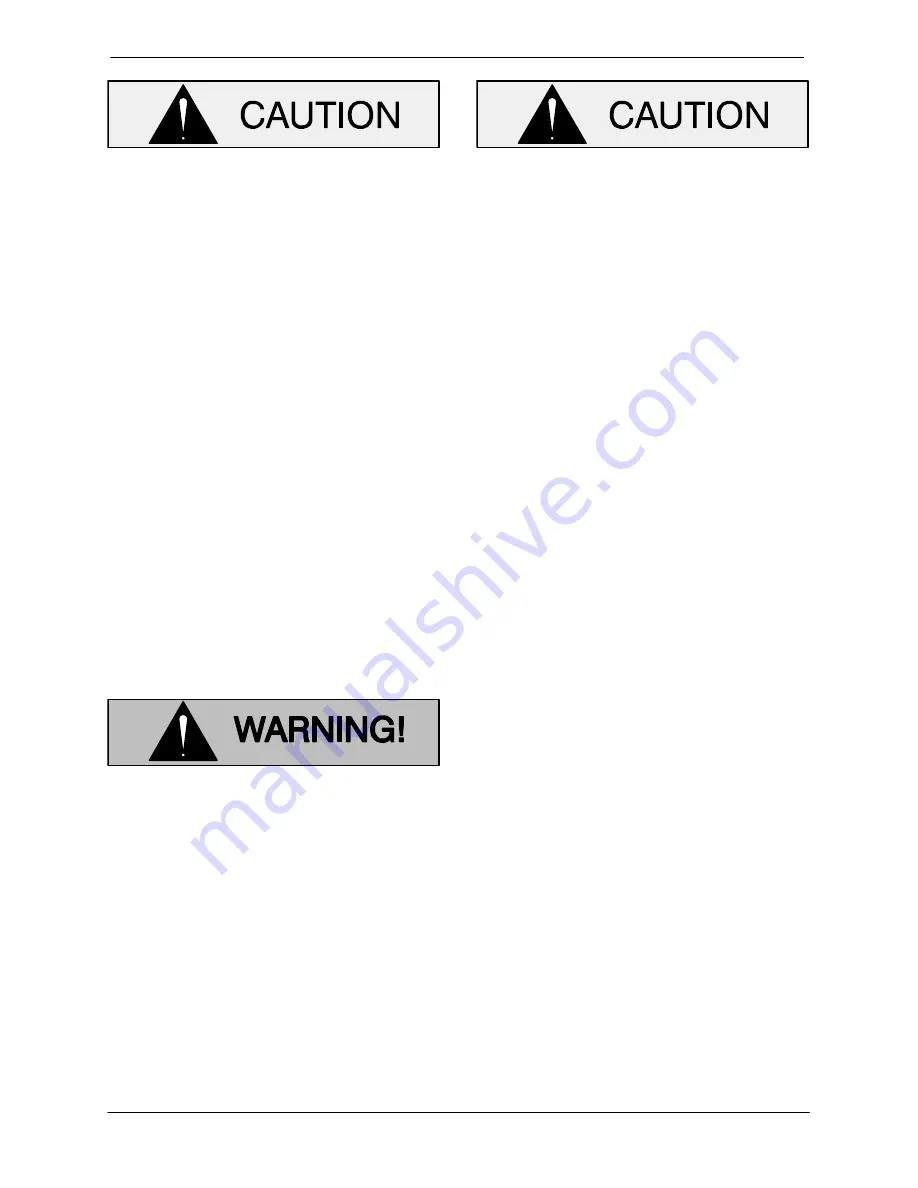
OM−00974
80 SERIES
PAGE B − 2
INSTALLATION
Only operate this pump in the direction in-
dicated by the arrow on the pump body
and on the accompanying decal. Other-
wise, the impeller could become loosened
from the shaft and seriously damage the
pump. Refer to
Rotation
in
OPERATION
,
Section C.
d. Check levels and lubricate as necessary. Re-
fer to
LUBRICATION
in the
MAINTENANCE
AND REPAIR
section of this manual and per-
form duties as instructed.
e. If the pump has been stored for more than 12
months, some of the components or lubri-
cants may have exceeded their maximum
shelf life. These
must be inspected or re-
placed
to ensure maximum pump service.
If the maximum shelf life has been exceeded, or if
anything appears to be abnormal, contact your
Gorman-Rupp distributor or the factory to deter-
mine the repair or updating policy.
Do not
put the
pump into service until appropriate action has
been taken.
POSITIONING PUMP
Use lifting and moving equipment in
good repair and with adequate capacity
to prevent injuries to personnel or dam-
age to equipment. Suction and dis-
charge hoses and piping must be re-
moved from the pump before lifting.
Lifting
Pump unit weights will vary depending on the
mounting and drive provided. Check the shipping
tag on the unit packaging for the actual weight, and
use lifting equipment with appropriate capacity.
Drain the pump and remove all customer-installed
equipment such as suction and discharge hoses
or piping before attempting to lift existing, installed
units.
The pump assembly can be seriously
damaged if the cables or chains used to lift
and move the unit are improperly wrapped
around the pump.
Mounting
Locate the pump in an accessible place as close as
practical to the liquid being pumped. Level mount-
ing is essential for proper operation.
The pump may have to be supported or shimmed
to provide for level operation or to eliminate vibra-
tion.
SUCTION AND DISCHARGE PIPING
Pump performance is adversely effected by in-
creased suction lift, discharge elevation, and fric-
tion losses. See the performance curve on Page
E−1 to be sure your overall application allows
pump to operate within the safe operation range.
Materials
Either pipe or hose maybe used for suction and
discharge lines; however, the materials must be
compatible with the liquid being pumped. If hose is
used in suction lines, it must be the rigid-wall, rein-
forced type to prevent collapse under suction. Us-
ing piping couplings in suction lines is not recom-
mended.
Line Configuration
Keep suction and discharge lines as straight as
possible to minimize friction losses. Make mini-
mum use of elbows and fittings, which substan-
tially increase friction loss. If elbows are necessary,
use the long-radius type to minimize friction loss.
Connections to Pump
Before tightening a connecting flange, align it ex-
actly with the pump port. Never pull a pipe line into
place by tightening the flange bolts and/or cou-
plings.










































